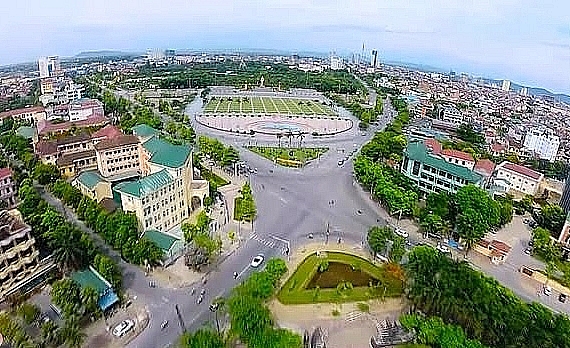Lots of potential
Speaking at the seminar “Link to develop the North Central sub-region in a new context” held on August 12, Vu Dai Thang, a member of the Party Central Committee, Secretary of the Quang Binh Provincial Party Committee, said that the North Central sub-region includes the provinces of Thanh Hoa, Nghe An, Ha Tinh, Quang Binh, and Quang Tri, which are particularly important areas in terms of socio-economic, political, national defense, and security, located entirely within the management of Military Zone 4 (area of 5.2 million ha, accounting for 10% of the whole country; the population of nearly 10 million people).
The provinces in the region all have the common feature that the West borders the Truong Son mountain range and Laos, the East borders the East Sea; long, complex and diverse terrain (mountains, midlands, plains, and coastal sandy areas); and extreme weather with many fluctuations.
From the actual topographical structure and population distribution of the provinces, Resolution No. 39-NQ/TW has formed several important economic areas in the sub-region such as: Thanh Hoa city; Nam Thanh – Bac Nghe area; Vinh – North Ha Tinh associated with road 7, road 8 and Cau Treo border gate; North Quang Binh – South Ha Tinh associated with Vung Ang industrial park, Hon La port, Phong Nha – Ke Bang tourist area with road 12A and Cha Lo border gate; and Dong Ha – Quang Tri associated with road 9 and Lao Bao border gate economic zone.
The North Central sub-region has great potential and a particularly important position in marine economic development and economic activities on the coastal land strip such as maritime economy; aquaculture, exploitation, and processing of aquatic products; sea travel; economic zones and industrial parks in association with coastal urban areas; and industries producing building materials and renewable energy.
Along with revolutionary landmarks, and typical historical and cultural relics, it will be an important premise for provinces in the region to promote socio-economic development, creating a breakthrough in the future.
However, despite the achievements, the North Central sub-region is still an underdeveloped sub-region in the North Central and Central Coast regions. In 2020, GRDP/person (VND49 million/person), labor productivity (VND87 million/worker); in 2021, the income per capita was the lowest in the region (VND3,218 million/month/person compared to VND3,493 million/person/month).
Although the income gap compared to the regional average and the national average is narrowing faster than in other sub-regions, the poverty rate according to the national standard 2016-2020 was higher than the regional average. The urbanization rate of the sub-region in 2020 was lower than the regional average and lower than the national average (more than 20%, lower than 31.47% of the whole Central Coast region, and lower than the national average of 36.82%). Regional linkage activities were not effective and not as expected.
 |
| From the actual topographic structure and population distribution of the provinces, Resolution No. 39-NQ/TW has oriented the formation of a number of important economic areas in the sub-region. Photo: Internet |
Identifying “resistance forces”
According to Nguyen Hong Son, Deputy Head of the Central Economic Commission, Deputy Head of the Standing Committee of the Steering Committee, to implement the Resolution of the 13th Party Congress, the Politburo reviewed the resolutions of the six economic zones that were issued nearly 20 years ago.
Moreover, they will issue new resolutions to orient the development of regions in order to promote their potential, advantages, optimize resources, meeting the development requirements of each region in the new context and situation of the country. The new resolution on the regions will be an important political basis for ministries and branches to issue new mechanisms and policies, supplement resources for rapid and sustainable development of the region and localities in the future.
At the policy exchange and dialogue session, most representative leaders of the five provinces acknowledged that regional linkage activities were not effective and not as expected. There were even issues that were considered “resistance” and were difficult to reach, which were local ideas, no one is willing to align with anyone. These problems were frankly presented and analyzed by the representatives to find a new direction.
The comments gave some suggestions to promote regional and sub-regional linkages in the future. Accordingly, it is necessary to create greater unity in awareness of the need and importance of regional and sub-regional linkages. Promote the development of infrastructure linking regions and sub-regions such as traffic infrastructure (road: eastern expressway, coastal road; and seaport, airport); and develop coastal urban chains.
Simultaneously, build a strong enough regional and sub-regional coordination institution with sufficient authority and resources. Linked areas include developing infrastructure, especially transport infrastructure; travel; human resource training, responding to climate change, sea level rise, protecting the environment; and building databases and sharing information in sub-regions and regions.
